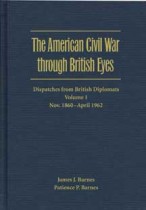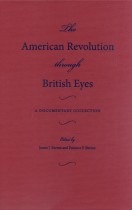The American Civil War through British Eyes Vol 2
James Barnes and Patience Barnes | Filed under: Civil War Era, Diplomatic Studies, Military History
The dispatches from Lord Richard Bickerton Pemell Lyons, Second Baron, British Envoy Extraordinary in Washington, D.C., during the Civil War offer insight into contemporaneous Anglo–American relations. The five-year period covered in these three volumes witnessed the fierce and deadly battles of the war fought both in the North and in the South, the shifting moods of public opinion and patriotic fervor, the changing economic conditions, and the assassination of President Abraham Lincoln.









